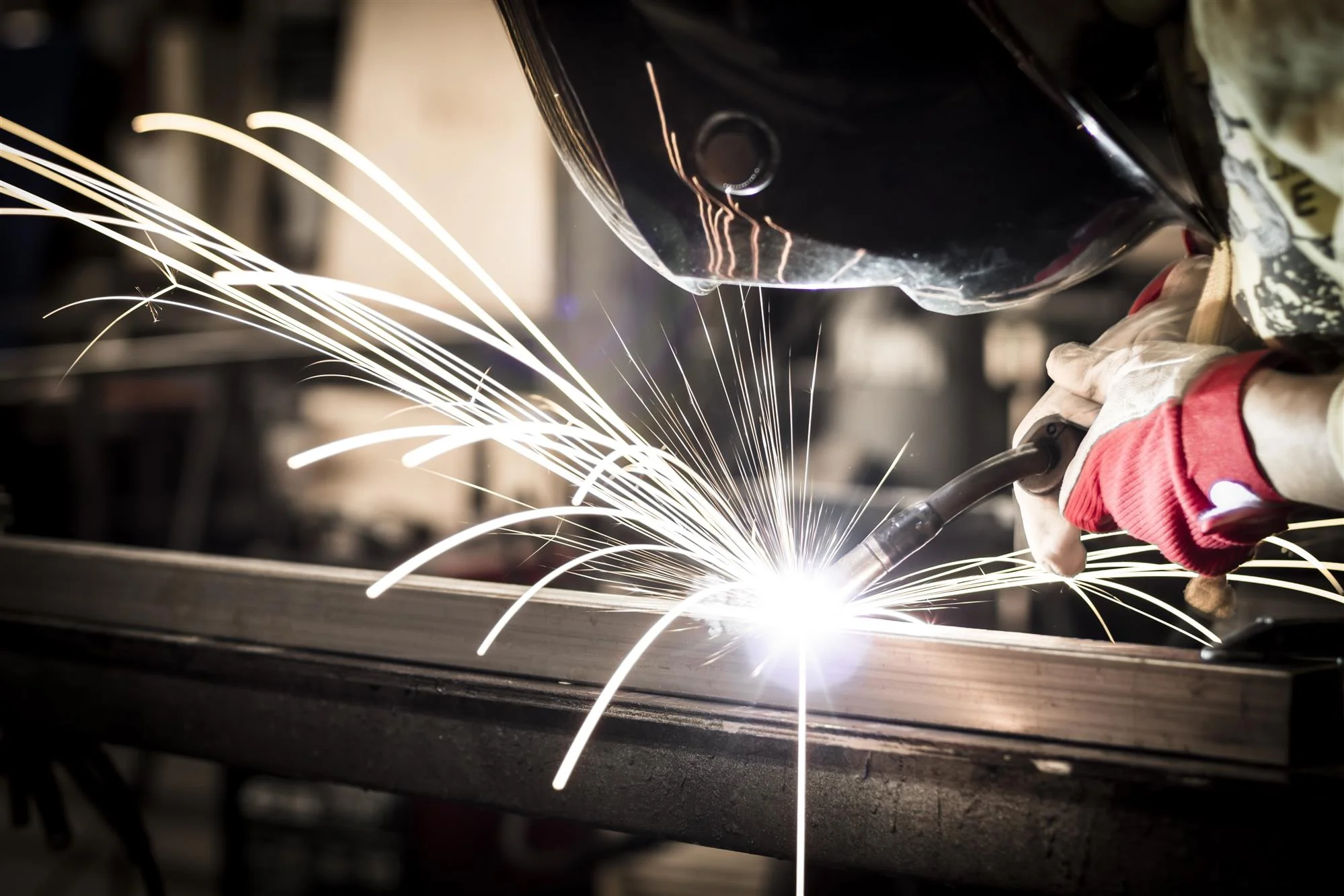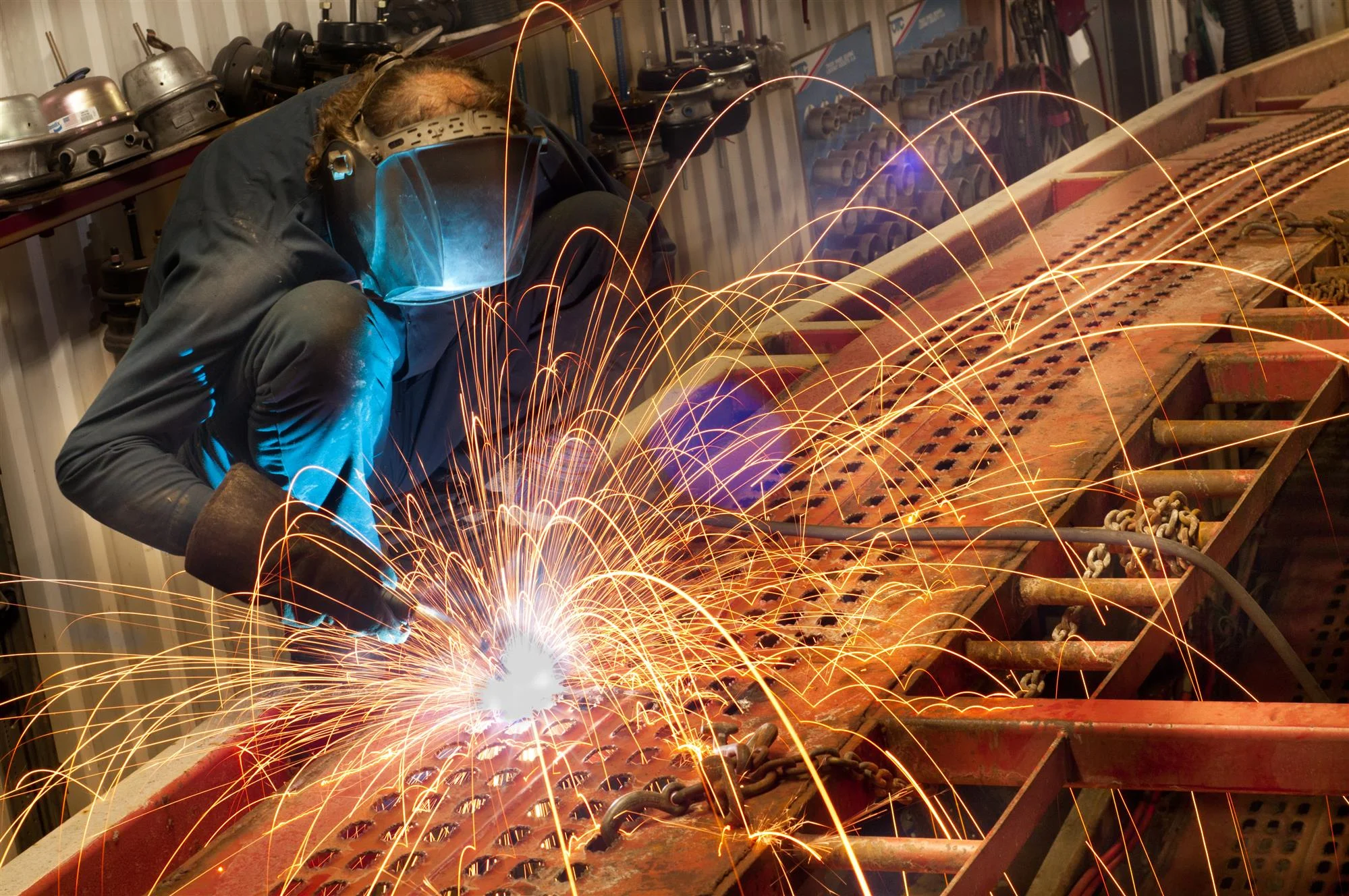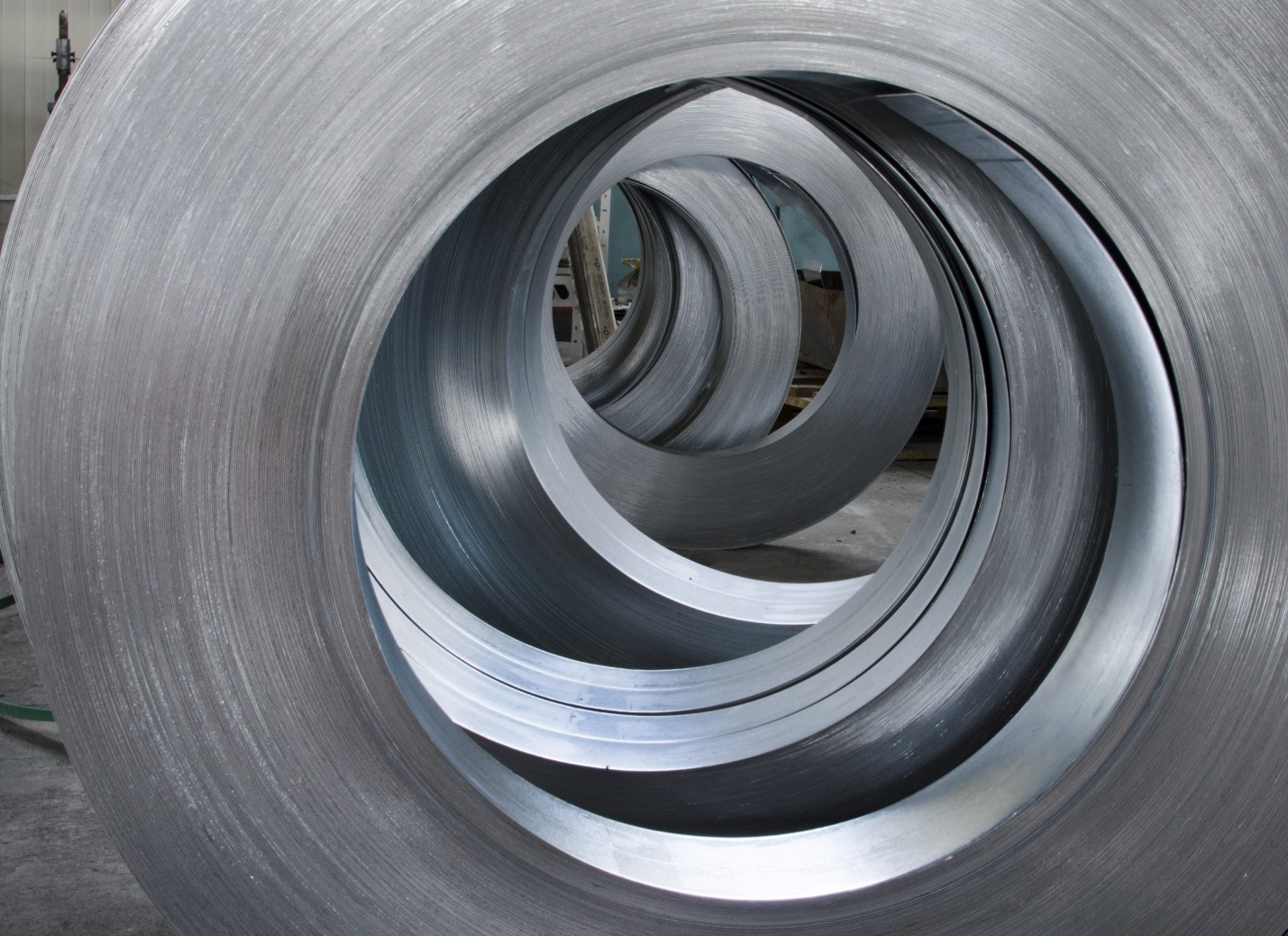Basic Welding Terms Welding Equipment Buyers Need to Know
Understanding basic welding terms can better enable metal fabrication and machine shop owners and equipment buyers to select the best machines for their needs. It is not uncommon for the person controlling the capital resources to not know much about welding.
Sure, they might know you ignite a torch of some type and then go about welding together different types of metals. Yet, this is just one type of welding process. You could easily use other types of welding processes at your shop. To help you better understand welding and the various processes used, the following are some of the more commonly used terms you should know.
- Arc Welding: This is one of the more common processes used to weld materials together. It involves using an electric arc and welding along the seams. Filler materials may or may not be required.
- Filler Materials: The materials that will be used to secure two or more pieces together to create the weld.
- Arc Cutting: This type of welding is where the metal is cut using an electric arc.
- Carbon Arc Welding: A carbon arc is used to weld and fuse materials together.
- Bare Metal Arc Welding: The materials are fused together by producing heat between the base metals and often includes using some form of filler material.
- Pressure Welding: Pressure is applied to the metal to fuse them together.
- Cutting Torch: The part of the welding machine that is used to cut metals and helps regulate the gases used to generate the heat required to cut the metal.
- Tempering: This process is where the metal is heated, cooled, and reheated to help make it stronger.
- Welding Torch: The part of the welding machine that is used to weld and fuse meals together. It also helps regulate the gases used to generate the heat required to weld metals together.
- Bond: This term refers to the joint created when welding materials together and is the part of the finished piece where the base metals and filler materials connect.
- Nonferrous Metals: These types of metals are those that are iron-free, such as copper, aluminum, titanium, and so on.
- Base Metals: The primary metals you want to cut or weld together.
- Ferrous Metals: These types of metals are those that contain some level of iron in their composition, such as steel.
- Metal Alloys: These metals are those that are a mixture of metal and other elements, such as bronze or brass.
- Gas Welding: This type of welding is where gas is used to create the flame require to generate the required heat to perform welding processes.
Please keep in mind, this is just a small sample of the wide array of terms used in welding, and there are numerous others you may want to learn.
If you are shopping for welding machines and welding equipment, please feel free to contact Quantum Machinery at (909) 476-8007 today for assistance in selecting the best machines and equipment to suit your needs!
Increase Work Efficiency in Your Company with These Master Tips
In order to remain competitive and adapt the changes in the industry, machine shops and metal fabrication operations need to look for ways to increase their work efficiency without sacrificing quality. The primary objective of achieving efficient work processes needs to include processes that not only can increase output, but also improve quality.
Review Current Work Processes
The first and most crucial step is to determine your current level of efficiency by reviewing current work processes. You should review all processes for every product your manufacture, as well as the processes used to set up and configure each piece of equipment and machinery. Important questions to answer include:
· Are there certain jobs or types of output that seem longer to produce?
· How much waste is being generated from manufacturing processes?
· How frequent is maintenance performed?
Gather Input from Your Employees
Most managers are not fully aware of the intricate processes required to produce output even when they have a general understanding of how each machine works. Talk to your employees to find out what would make production more efficient. Listen to their needs and concerns. Sometimes, your employees will have great ideas that can benefit both them and your business.
Set Realistic Goals and Expectations
Once you have identified what work processes and equipment could stand some improvement, the next step is to establish realistic goals and expectations. If you set these too high, quality can suffer, as your employees will attempt to meet production output goals. If you set these too low, while quality could improve, you may fall short on being able to deliver products on time. You need to find a careful balance between the two.
Update Equipment and Machinery with Newer Technologies
As your budget allows, it is beneficial to upgrade your equipment and machinery to the latest technologies. Some of the newer advances can help automate work processes and improve efficiency.
If you have numerous pieces of equipment you want to upgrade, start with the one that is used the most often first. Next, upgrade the second-most used machine, and so on. This way, your most popular product lines are being upgraded in order to allow you to potentially increase output and your revenues.
Constantly Train Your Employees
You need to develop ongoing employee education and training courses for your employees. These courses are necessary to ensure they understand how to properly operate machinery and equipment. Anytime you upgrade to a new machine, remember to include training.
Do Not Overlook Maintenance Programs
Preventative maintenance programs are essential to improving efficiency. This type of maintenance helps identify and resolve potential issues before they become major problems causing work stoppages.
Rinse and Repeat
Going through these tips is something you need to do frequently to monitor your efficiency levels. Get into the habit of reviewing work processes anytime there is a noticeable problem, as well as every six to twelve months.
For more tips or to learn more about the latest machinery with technology to improve business efficiency, please feel free to contact Quantum Machinery Group at (909) 476-8007 today!
The Future of Manufacturing in the USA
It is no surprise that the manufacturing industry in the United States is not at the level it once was. Compared to the rest of the world, where manufacturing jobs are on the rise, it feels like the industry in the U.S. is not as far ahead as it once was.
However, as we move into 2018, there is renewed optimism among manufacturing leaders and American companies are planning out their strategies for how to move forward. Understanding trends in the industry allows company leaders to develop a successful strategy. Whether it is through enhancing efficiency, reducing costs, or investing in new equipment like cold saw blades, manufacturing businesses should keep the following trends in mind when making decisions this year.
Reducing Costs Through Automation
As has been going on for years now, automation continues to affect manufacturing processes. While this trend is not exactly new, it is important to find opportunities with automation and take advantage of its benefits where possible. Automation allows you to have repeatable processes that deliver consistent, accurate, and high-quality results.
A major part of this change for manufacturing companies is investing in the right tools and equipment that deliver a healthy ROI for the cost. You can work with Quantum Machinery Group to identify your individual needs for things like cold saw blades, band saws, laser cutting systems, and more.
Offering Services to Customers and Clients
Another shift on the horizon for manufacturing in the United States is the role of a company as a service provider in addition to selling products. This has been seen for some time in the electronics field, where large businesses not only sell to a B2B partner or end user but also offer services and support to continue the relationship with the consumer.
As you research and develop new products to sell, consider how you can expand the services and support that goes along with it. This includes things such as phone support, repairs (if applicable), and on-site training and servicing.
Enhancing Efficiency with Tools
The biggest trend in 2018 and beyond is the focus on improving all-around manufacturing efficiency. Whether it is in factories or the office, manufacturing companies are taking a hard look at existing processes and strategies to see where they can trim down costs without sacrificing quality and output volume.
Many may be cautious about automating processes and replacing human jobs with the precision and power of machines, but a retrained workforce to manage these systems allows for an adapted business model that benefits from technology without compromising the commitment to human investment.
By working with Quantum Machinery Group, manufacturing companies are able to invest in machinery and parts that enhance the efficiency and productivity of their existing equipment. The full-service approach not only allows businesses to get the tools they need for a particular job, they also get the support and knowledge needed to best maximize the value of the investment.
From replacement cold saw blades to press brakes and plate benders, Quantum Machinery Group has all of the solutions your company needs to stay ahead of the curve and succeed in the next phase of manufacturing in the United States. Learn more by contacting a representative today at (909) 476-8007.
What is Section 179? Is Section 179 Important for you to know about in 2017?
Read about important information you need to know about Section 179 for 2017 and how it applies to your business in this post from Quantum Machinery Group.
Great news for machinery buyers: Section 179 of the U.S. Internal Revenue Code has been restored to $500,000 for 2017.
In a nutshell:
- Businesses can deduct up to $500,000 from their taxes on up to $2 million in qualifying equipment purchases.
- All purchases, financing, delivery and set-up must be complete before midnight on 12/31/2017 for both equipment and software.
- A bonus depreciation is in place for all businesses who have purchased over $2 million in equipment. They can depreciate 50% of the cost of the equipment they purchase and put into production from 2015 through 2017. (This bonus depreciation reduces to 40% in 2018 and to 30% in 2019.)
This is great news if you’ve been thinking about purchasing new machine tools for your business. But this deduction only applies to machines ordered and delivered by December 31st, so you must act quickly to take advantage of these savings.
The following examples help explain how all this works:
Example of Section 179 Deduction
In this first example, you can see a detailed overview of your savings if you take advantage of the Section 179 tax break. If you purchase $250,000 in equipment, you can earn $87,500 in savings, decreasing the total amount you spend to $162,500.
- Cost of Equipment: $250,000.00
- Section 179 Deduction: $250,000.00
- Total First Year Deduction: $250,000.00
- Cost of Savings on Equipment Purchase: $87,500.00
- Lowered Cost of Equipment After Tax Savings: $162,500.00
Example of Bonus Depreciation
In this second example, you are shown a detailed overview of the bonus savings should you spend over $2 million on equipment and be eligible for bonus depreciation.
- Cost of Equipment: $2,500,000.00
- Section 179 Deduction: $500,000.00
- 50% Bonus Depreciation Deduction: $1,000,000.00
- Regular First Year Depreciation: $200,000.00
- Total First Year Deduction: $1,700,000.00
- Cost of Savings on Equipment Purchase: $595,000.00
- Lowered Cost of Equipment After Tax Savings: $1,905,000.00
Quantum Machinery Group has a full inventory of Plate Rolls, Cold Saws, Band Saws, Press Brakes, Shears, Angle Rolls, Lasers, Welding Tables, Roll Benders, Ornamental Working Machinery and other equipment ready for immediate delivery.
Ready to move on your next machinery purchase? Call one of our machinery specialists today for a quote. *Flexable Financing Available!* (909) 476-8007 / Sales@QuantumMachinery.com
Understanding the Benefits of Quantum Machinery Arc Meters
One of the most frustrating parts of metalworking is taking the precise measurements needed to make sure everything is exactly the right size. Sometimes, less than a millimeter’s difference can mean getting the job done right or having to do it all over again.
Metalworking machinery can work wonders when it comes to making metalbending and metalworking jobs easier, giving you the ability to take incredibly precise measurements that the pieces you manufacture will be exactly the right size from the first cut to the last.
In particular, Quantum Machinery Group’s line of arc meters provide users with a whole series of benefits and abilities that make them a must-have for any serious metalworker. Below, we discuss everything that sets the arc meters available through Quantum Machinery apart.
Instant Measurements
Quantum Machinery’s arc meters are high-end metalworking instruments that give users the power to get an immediate (and accurate) direct reading of the radii of any section of their current application.
Measure External and Interior Radii
One of the premier features of arc meters is that it allows users to measure both the external and interior radii within a section. Instead of taking the measurement of one radius and then determining the other through the use of a mathematical formula or looking up the information on a cross-reference chart (which opens the door for human error and the delays such errors cause), users of Quantum Machinery’s arc meters can determine the radius of both the interior and exterior of a section, giving them absolutely precise measurements without any additional work or calculation.
Measure in Different Units
Arc meters can be used to measure in both millimeters and inches. Instead of having to switch between tools sized to different systems of measurement, arc meter users can use the same device to take the measurements they need and record them in the scale they are currently using. It’s easy to switch between measuring systems, meaning users will be able to quickly and easily take measurements for multiple applications, speeding up the time it takes to complete their projects considerably.
Duplicate Arches with Easy
Perhaps the most impressive feat Quantum Machinery’s arc meters are capable of is giving users the ability to duplicate arcs that have already been measured. Once an arc meter has been used to take the measurements of an arc, that information can be used to make as many duplicates as is necessary to complete the task at hand. Quantum Machinery’s selection of arc meters gives users the ability to measure and create metal arcs with machine precision, ensuring that their metalworking projects will succeed.
Want to learn more about how Quantum Machinery arc meters can aid in metal fabrication? Contact Quantum Machinery Group today at www.quantummachinerygroup.com to speak with one of our customer service representatives or to request more information on our products, including the arc meter. If you have questions about whether an arc meter is the right tool for you, we’ll be happy to answer them!













